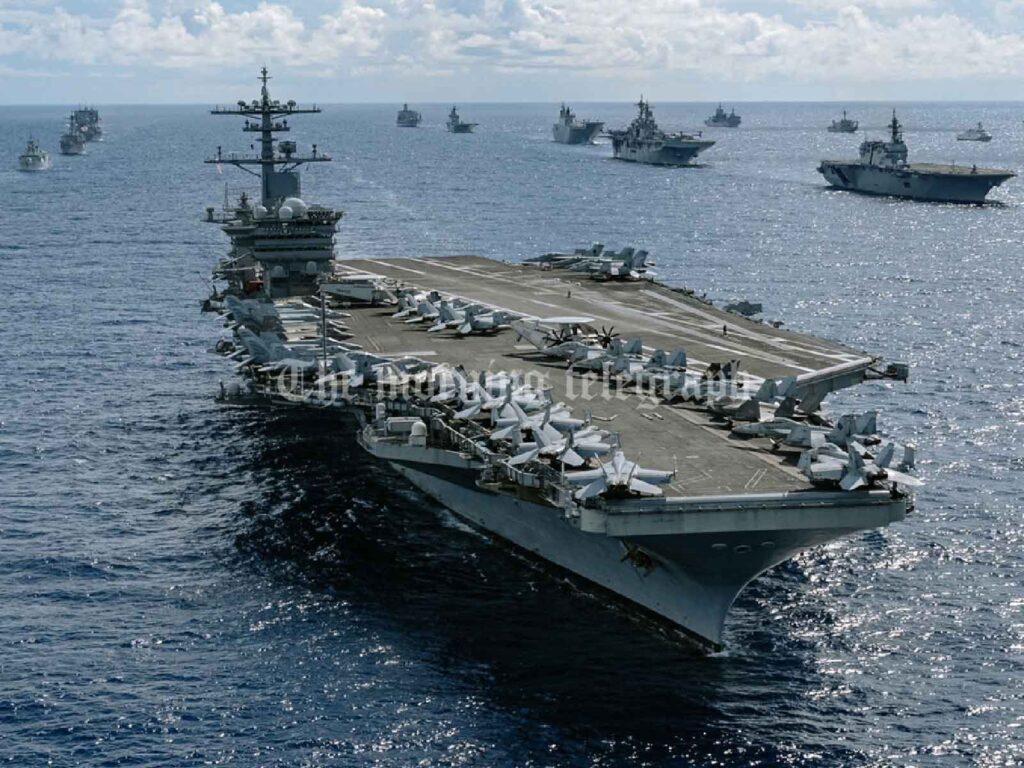
WASHINGTON — In response to escalating violence between Israel and Hezbollah, the United States is deploying a small number of additional troops to the Middle East, the Pentagon announced on Monday. This move aims to address the heightened risk of a larger regional conflict following a significant uptick in military action.
Details of Deployment
Pentagon Press Secretary Maj. Gen. Pat Ryder did not disclose the exact number of troops being sent or their specific roles. The U.S. currently maintains about 40,000 military personnel in the region. The deployment comes alongside the aircraft carrier USS Harry S. Truman and other naval assets setting sail from Norfolk, Virginia, to join the Sixth Fleet in Europe, allowing for flexibility in military response should the situation worsen.
Ryder stated, “In light of increased tension in the Middle East and out of an abundance of caution, we are sending a small number of additional U.S. military personnel forward to augment our forces that are already in the region.” He emphasized operational security, refraining from further details.
Israeli Airstrikes and Warnings
This escalation follows extensive Israeli airstrikes targeting Hezbollah positions in Lebanon, resulting in hundreds of casualties. Israeli Prime Minister Benjamin Netanyahu has publicly urged Lebanese civilians to evacuate their homes as the country prepares for an expanded air campaign against Hezbollah.
The U.S. is also advocating for diplomatic solutions, with plans to present “concrete ideas” for de-escalation to allies and partners during the upcoming U.N. General Assembly. These efforts aim to provide an “off-ramp” for both Israel and Hezbollah to ease tensions and avoid a full-scale war.
Advisories for American Citizens
The State Department has advised American citizens in Lebanon to leave the country due to the unpredictable conflict dynamics, emphasizing the urgency to exit while commercial travel options remain available. Ryder indicated that the additional troops might assist in potential evacuations, though specifics were not confirmed.
Naval Readiness
Currently, the U.S. has a Marine amphibious ready group in the eastern Mediterranean, with the 26th Marine Expeditionary Unit on standby for potential evacuations if necessary. The Pentagon is assessing whether the USS Abraham Lincoln, currently in the Arabian Gulf, will remain in the region or continue its deployment to the Asia-Pacific.
Defense Secretary Lloyd Austin has been actively engaging with Israeli Defense Minister Yoav Gallant, pushing for a cease-fire and a reduction of regional tensions. Ryder noted the risk of a broader conflict, stating, “Given the tensions, given the escalation, there is the potential for a wider regional conflict. I don’t think we’re there yet, but it’s a dangerous situation.”
The American military presence in the region serves a dual purpose: to bolster Israel’s defense capabilities and to safeguard U.S. personnel and assets, with naval forces strategically positioned across various locations to respond to any emerging threats.




